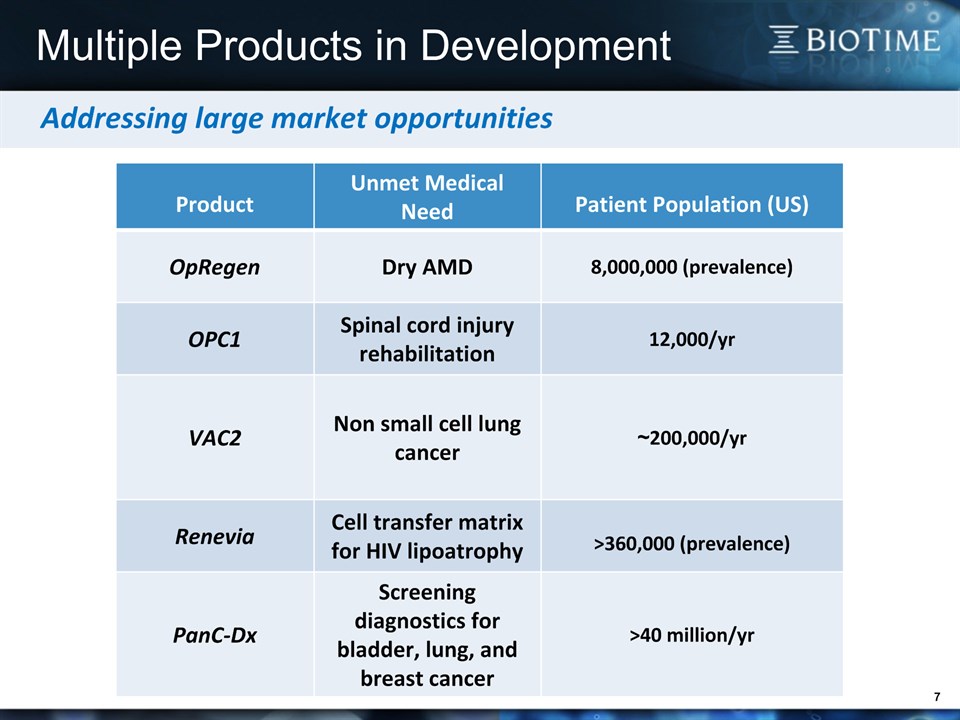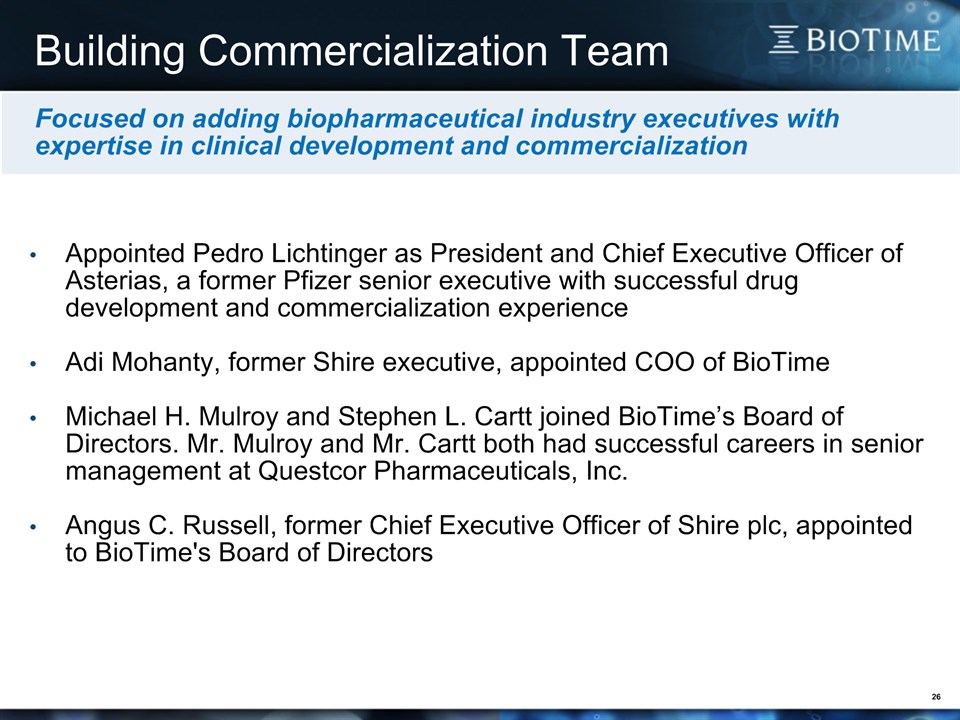Free signup for more
- Track your favorite companies
- Receive email alerts for new filings
- Personalized dashboard of news and more
- Access all data and search results
Filing tables
LCTX similar filings
- 12 Mar 15 Entry into a Material Definitive Agreement
- 11 Mar 15 BioTime, Inc. Reports Fourth Quarter and Fiscal Year End 2014 Financial Results and Recent Corporate Accomplishments
- 10 Mar 15 Icahn School of Medicine at Mount Sinai and LifeMap Solutions Launch Asthma Study for iPhone
- 24 Feb 15 Regulation FD Disclosure
- 17 Feb 15 Entry into a Material Definitive Agreement
- 6 Feb 15 Entry into a Material Definitive Agreement
- 6 Feb 15 OncoCyte to Present Cancer Diagnostic Clinical Study Data at AACR Annual Meeting
Filing view
External links



























